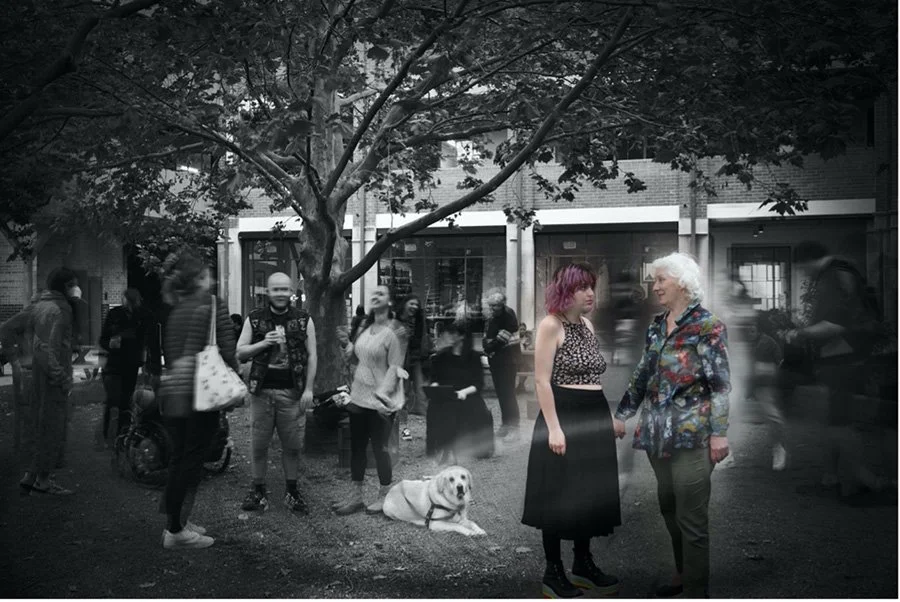Artlink & APA | Raising the bar—collaborative partnerships
In 2022, Jump Left founder Sim Luttin wrote an article ‘Arts Project Australia: Raising the bar through collaborative partnerships’ for Artlink Magazine, arguing that deconstructing art hierarchies and labels to create a more open and inclusive contemporary art landscape is long overdue and is a vital prerequisite moving forward, rather than the exception or a tick box if we are to claim any semblance of equity in the arts.
Excerpt: In 2020 as the pandemic spread across the globe, Arts Project Australia partnered with UK-based Slominski Projects and Jennifer Lauren Gallery to form Art et al. This directly responded to a need for more inclusive programming and better access for neurodivergent, intellectually and learning-disabled artists to be seen, heard and participate in the arts.
Eden Menta and Natalie Jurrjens Opening Our Eyes, 2021 digital print banner as part of ACCA’s ‘Who’s Afraid of Public Space’, a multifaceted project based in Melbourne. Image: Courtesy of the artists.
In 2021, Arts Project worked with the Australian Centre for Contemporary Art (ACCA) and other Melbourne-based galleries and studios to realise the expansive arts models demonstrating a capacity to support a broad spectrum of practices, people, and perspectives. These initiatives signal a change in long-held contemporary art conventions, moving toward models that embrace traditionally marginalised and siloed creatives. However, the transformation needed is found in prolonged and often exhausted discourse, such as margin vs centre and outside vs inside; unfortunately, these debates reinforce outdated barriers to participation. Deconstructing art hierarchies and labels to create a more open and inclusive contemporary art landscape is long overdue and is a vital prerequisite moving forward, rather than the exception or a tick box, if we are to claim any semblance of equity in the arts.
Western art canons have typically misunderstood, othered and overlooked neurodivergent (as well as intellectually and learning-disabled) people.[1] In Australia, as recently as the 1970s, many people with intellectual disabilities lived in state-based institutions or close-knit families. Their artwork…
–
Read the full article on Artlink’s website.
Purchase Artlink publication SENSORIA: Access & Agency.
This issue platforms a range of contemporary art practices and debates written by and with artists who identify as part of the disabled, d/Deaf, vision impaired or neurodiverse communities.
The commissioned essays, profiles and conversations offer diverse perspectives of lived experience and (in)visibility in the art worlds of Australia, Aotearoa/New Zealand and the UK. Edited by Una Rey.


